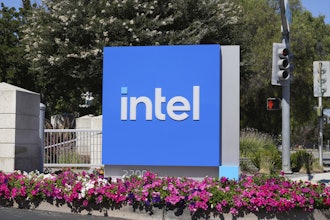
Editor's Note: The views expressed in this column are solely those of the author.
In his book "Bad Money," Kevin Phillips says that starting with the Clinton Administration, both President Bill Clinton and his Treasury Secretary Robert Rubin "saw finance leading the nation into a post-industrial era in which services, especially the lucrative financial ones, would replace manufacturing just as the latter had ushered out a shrinking agricultural sector. Finance was the next great elevator ascending into the luminous temple of progress." All administrations since Clinton have abandoned manufacturing and focused on supporting the transition to a service economy led by finance. The economic shift that began during the Reagan era is all about short-term strategies to make fast profits.
Economic analyst Rana Foroohar says, "The finance sector of the economy, which includes banking, insurance, real estate, hedge funds and mutual funds, used to be the servant of business, in which they took individual and corporate savings and funneled the money into productive enterprises." Foroohar thinks that the "financialization of America is perpetuating Wall Street's reign over Main Street, widening the gap between rich and poor, and threatening the American Dream."
This change in free-market capitalism is called financialization. Financialization is a way to make money from money rather than from goods and services. Financialization emphasizes short-term profits and cost reduction rather than long-term investment.
The Growth of Stock Buybacks
One of the most egregious yet popular tools in the financialization arsenal is the strategy of stock buybacks, where the company purchases its own shares to reduce the number of shares outstanding, thereby inflating the value of the stock so it can sell it for a quick profit.
Buybacks were illegal throughout most of the 20th century because they were considered a stock market manipulation. But in 1982, the Securities and Exchange Commission passed rule 10b-18, which created a legal process for buybacks and opened the floodgates for companies to start repurchasing their stock en masse. The Dow Jones Indices estimates that stock buyback spending was $922.7 billion by the end of 2022 from 144 public corporations.
Research from the Roosevelt Institute shows that productive corporate investment disappeared in the last 30 years and has been replaced by shareholder payouts (dividends and stock buybacks). The research showed that in the 1960s and 1970s, every dollar of earning or borrowing was associated with a 40-cent increase in investment back into the business versus payouts to shareholders. Since the 1980s, less than 10 cents of each borrowed dollar is investment. This means less investment in capital equipment, research and development, basic science research and start-up companies.
The downside of stock buybacks:
- Investment in financial assets crowds out investment in real assets because of the pressure for quick returns and short-term profit.
- The money is flowing to a small minority of wealthy shareholders.
- A growing number of companies are borrowing to buy back their stocks.
- Stock buybacks generate short-term share inflation rather than long-term growth.
- Public corporations prioritize stock prices over true investment that will lead to prosperity.
- The financial industry, with its emphasis on short-term profits, has played a major role in the decline of manufacturing in the U.S.
- Stock buybacks are a form of stock manipulation.
The Semiconductor Example
In manufacturing, this problem is most obvious in the semiconductor industry. Over the last four decades, U.S. chipmakers have outsourced most of their manufacturing to foreign manufacturers in Taiwan, South Korea and China—only 12% of their production is made in the U.S.
The U.S. chipmakers spent far less of their profit on capital spending compared to their foreign competitors. So began the era of the "fabless chipmaker," most of their profits were returned to the shareholders, and half went to stock buybacks. Between 2011 and 2020, semiconductor companies collectively spent nearly $250 billion on stock buybacks.
In 2021, the crunch came in the semiconductor industry, and these same chipmakers asked for and received $52 billion from the government in bailout money from the Chips Act. But this begs the question, should these companies get subsidies from the government and be able to do stock buybacks? It is outrageous that companies that outsourced their products and gave their technology to competitors can get subsidies and do stock buybacks.
Financialization Has Led to Rising Inequality
Financialization and stock buybacks have been good for the wealthy. According to the Federal Reserve, the top 1% saw their wealth increase from $4.92 trillion in 1989 to $38.95 trillion in 2020. In fact, the top 10% of the population by wealth owns more than 85% of corporate equities. There were 13 American billionaires in 1982; by 2019, there were 607. The share of national income for the middle class has been declining since 1970.
If you are part of that 1%, life is good, and you're probably interested in supporting legislation that maintains your position. But if you are in the middle class, or if you are in the 91 million workers (56% of all workers) who do not have a college education, then the future probably looks bleak, which has led to general unrest in working America. The society built from the New Deal that propelled the middle class has virtually ended.
A combination of events, including deregulation, tax reduction, outsourcing, the decline of unions, and a concerted effort by multinational corporations to reduce labor costs, all contributed to the acceleration of inequality and the enormous gains in wealth by the top 1%. It hasn't been good for the country, the economy, or working people, so the question is, what will the multinational corporations do about it?
The Commitment to Stakeholders
On August 19, 2018, 181 U.S. CEOs signed a commitment letter to lead their companies for the benefit of their investors and "for the benefit of all stakeholders: customers, employees, suppliers, communities, and shareholders." If they are really serious about benefitting all stakeholders, they should support legislation to repeal or reduce stock buybacks.
It is no coincidence that the rise of financialization happened during the decline of manufacturing, middle-class income, capital investment, and inequality. It is also no coincidence that during the same period, there was an enormous shift in wealth to the top 10% of earners at the expense of the bottom 90%. The current financial philosophy of Wall Street is extractive, not productive.
Andy Grove from Intel said, "We are not producing wealth by producing goods; we are producing wealth by financial engineering, and the result is a high-profit, low-prosperity nation." It is bad for the manufacturing sector and the economy because it is not about developing strategies for the long term.
Perhaps Wall Street is a good example of free market capitalism at its best, but its lust for short-term profits has the power to push the economy off the cliff.
A rapidly growing financial sector is stoked by borrowed money or debt, which has historically been the catalyst for economic crises, recessions, and even depressions. If unchecked, the financial sector's increasing prominence will, in time, damage the real economy and the social fabric of the United States.
Michael Collins is the author of "Dismantling the American Dream: How Multinational Corporations Undermine American Prosperity." He can be reached at mpcmgt.net.






















